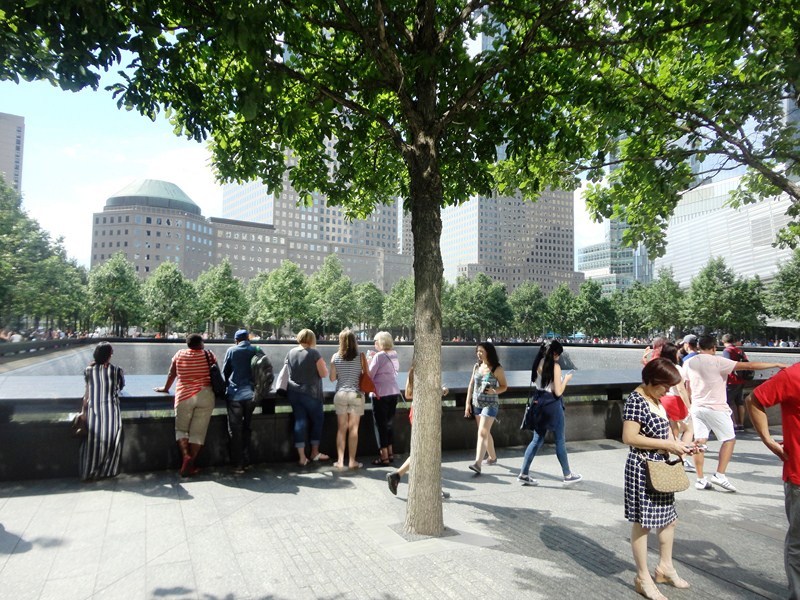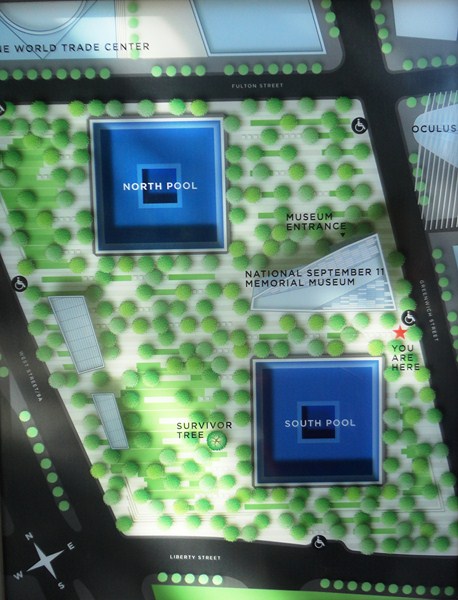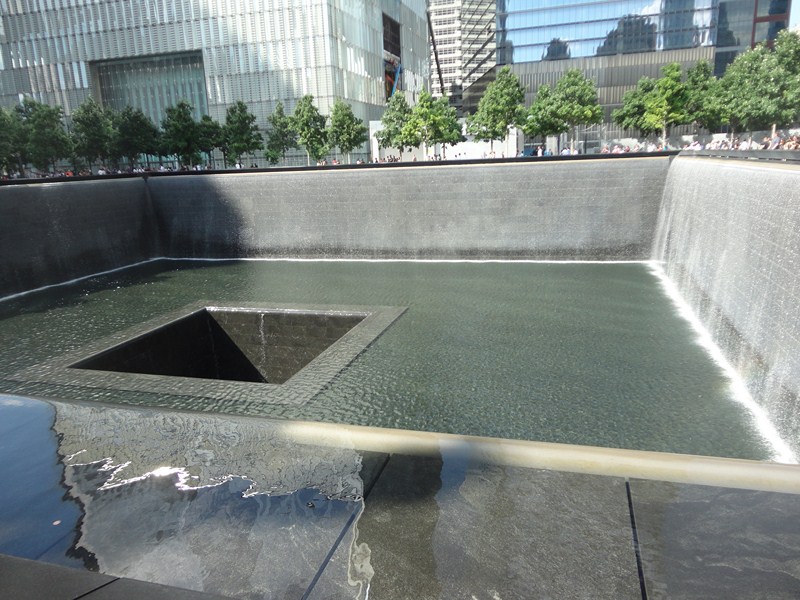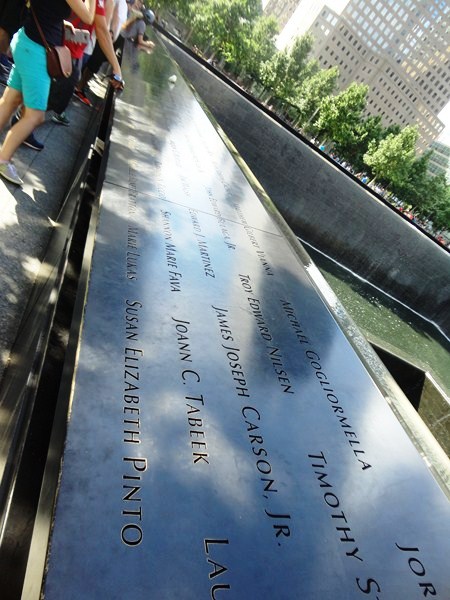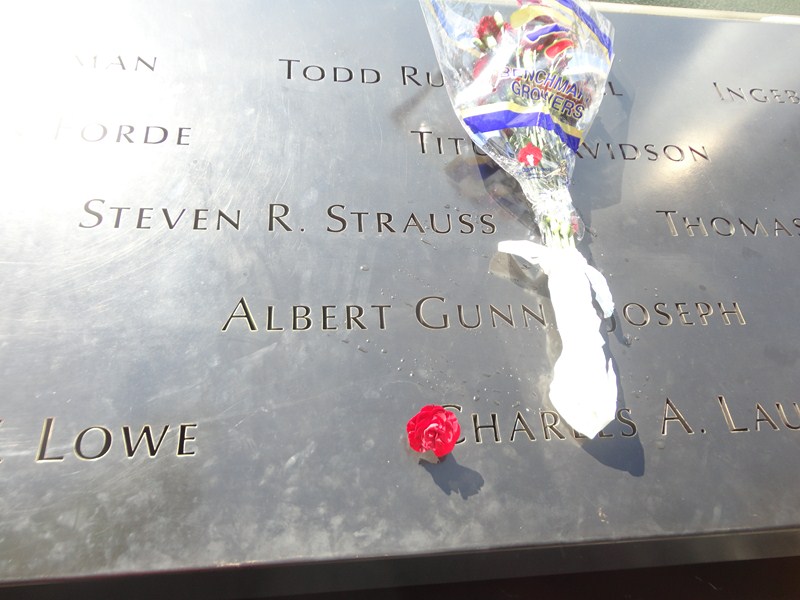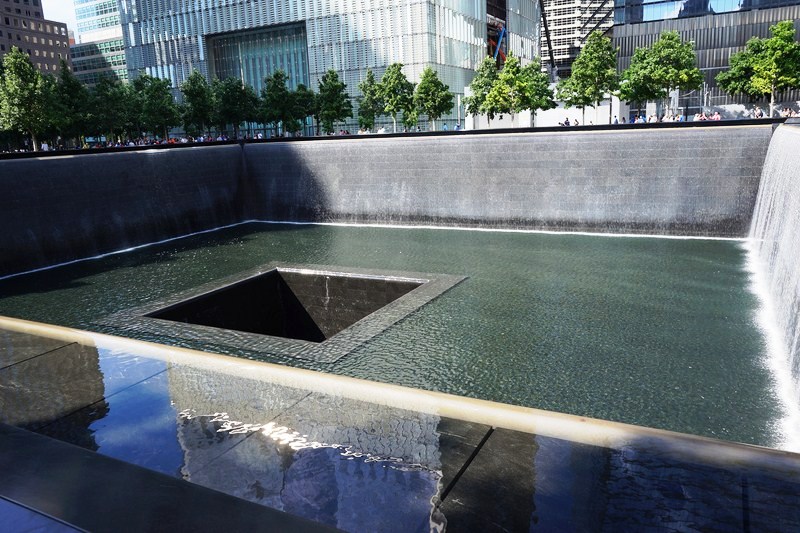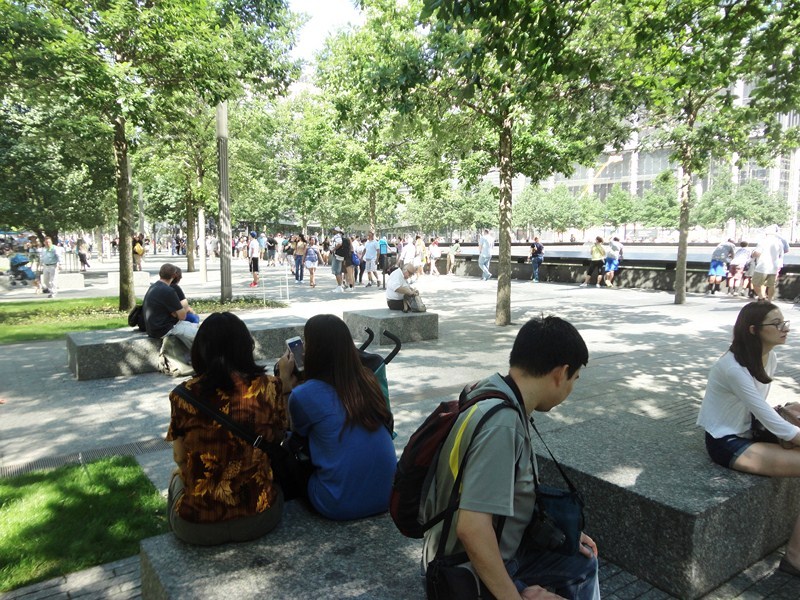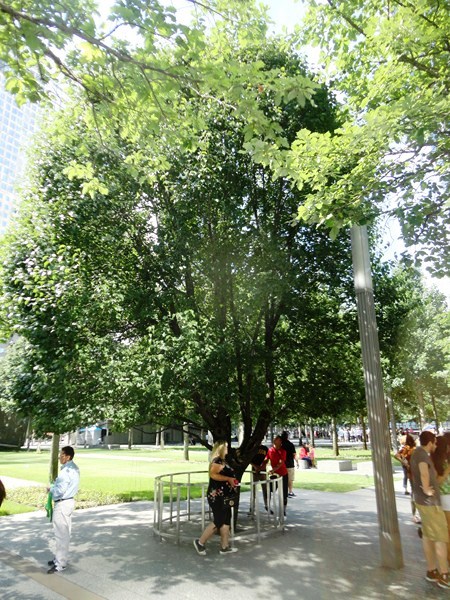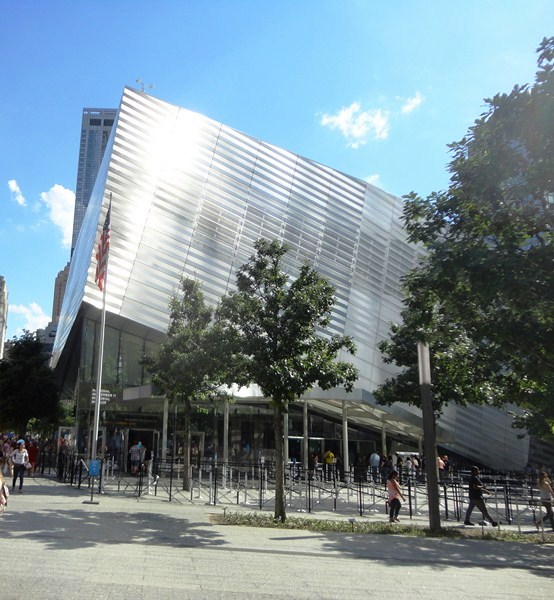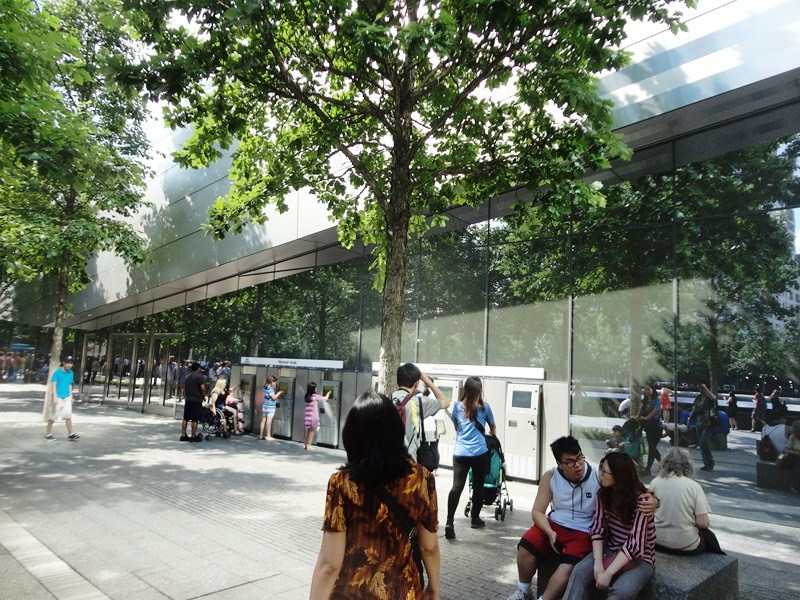The National September 11 Memorial & Museum (also known as the 9/11 Memorial and 9/11 Memorial Museum), located at the former location of the Twin Towers (destroyed during the September 11 attacks) at the World Trade Center site, are the principal memorial and museum, respectively, that commemorate the September 11, 2001 attacks, which killed 2,977 victims, and the World Trade Center bombing of 1993, which killed six.
The memorial was designed by Israeli architect Michael Arad (whose Reflecting Absence, on January 2004,was selected as the winner, from among 5,201 entries from 63 countries, of the World Trade Center Site Memorial Competition) of Handel Architects, a New York- and San Francisco-based firm, who worked with landscape-architecture firm Peter Walker and Partners on the design.
Featuring a forest of trees with two square pools in the center where the Twin Towers stood, its design was consistent with the original Daniel Libeskind master plan which called for the memorial to be 9.1 m (30 ft.) below street level (originally 21 m./70 ft.) in a plaza. Started on August 2006, the memorial was dedicated on September 11, 2011, the tenth anniversary of the attacks, an was opened to the public the following day. The museum was dedicated on May 15, 2014 and opened on May 21.
Two 4,000 m2 (1 acre) pools, with the largest man-made waterfalls (intended to mute the sounds of the city, making the site a contemplative sanctuary) in the United States, comprise the footprints of the Twin Towers, symbolizing the loss of life and the physical void left by the attacks. Delta Fountains engineered the fountain. Many parts of the memorial were planted by Walker with white oaks while almost 400 sweet gum and swamp white oak trees fill the remaining 24,000 m2 (6 acres) of the Memorial Plaza, enhancing the site’s reflective nature.
The parapets of the walls of the memorial pools are attached with 76 bronze plates inscribed with the names, arranged according to an algorithm, of 2,983 victims – 2,977 killed in the September 11 attacks and six killed in the 1993 World Trade Center bombing.
Around the perimeter of the North Pool are the names of the employees and visitors in the North Tower (WTC 1), the passengers and crew of American Airlines Flight 11 (which struck the North Tower), and the 5 employees and a visitor, all adults, of the 1993 World Trade Center bombing, all memorialized on Panel N-73.
Around the perimeter of the South Pool are the names of the employees and visitors in the South Tower (WTC 2), the passengers and crew of United Airlines Flight 175 (which struck the South Tower), the employees, visitors, and bystanders in the immediate vicinity of the North and South Towers, the first responders (listed with their units) who died during rescue operations, the passengers and crew of United Airlines Flight 93 (which crashed near Shanksville, Pennsylvania) and American Airlines Flight 77 (which struck the Pentagon), and the employees at the Pentagon.
Though company names are not included, the company employees and visitors are listed together. Passengers on the 2 United Airlines and 2 American Airline flights are listed under their flight numbers. The phrase “and her unborn child” follows the names of ten pregnant women who died on 9/11 and one who died in the 1993 attack.
The “Survivor Tree,” a symbol of hope and rebirth, is a 2.4 m.( 8-ft.) tall callery pear tree (planted during the 1970s near Buildings 4 and 5, in the vicinity of Church St.) which was recovered, badly burned with one living branch, from the rubble at the World Trade Center site on October 2001. Nursed back to health by the Bronx nursery, the then 9.1 m. (30 ft.) tall tree was returned, on December 2010, to the World Trade Center site and is now a prominent part of the memorial.
The September 11 Memorial Museum, dedicated on May 15, 2014 and opened to the public on May 21, was built at the former location of Fritz Koenig‘s The Sphere, a large metallic sculpture placed in the middle of a large pool between the Twin Towers. Designed by Davis Brody Bond, the museum, about 21 m. (70 ft.) below ground and accessible through a pavilion designed by Snøhetta, encloses 10,000 m2 (110,000 sq. ft.) of publicly accessible space. Its exhibits include 23,000 images, 10,300 artifacts (including wrecked emergency vehicles, two tridents from the Twin Towers and pieces of metal from all seven World Trade Center buildings including the last piece of steel to leave Ground Zero in May 2002), nearly 2,000 oral histories of those killed (mostly provided by friends and families) and over 500 hours of video.
National September 11 Memorial & Museum: 180 Greenwich St, New York City, New York 10007. Open daily, 7:30 AM – 9 PM. Admission: US$24/adult, children below 12 years old is free.

